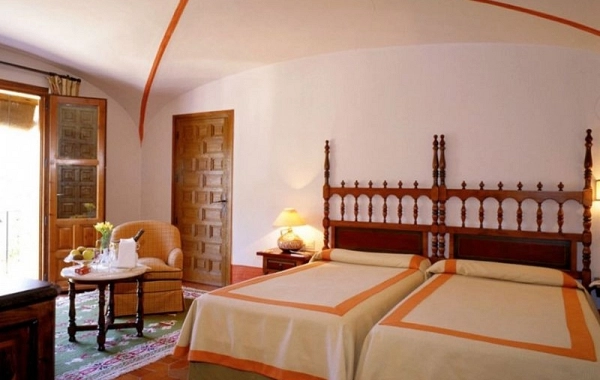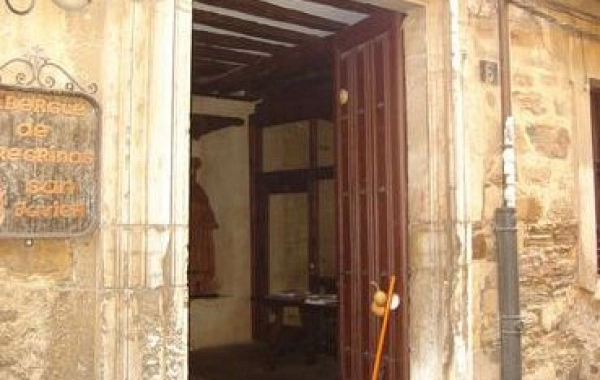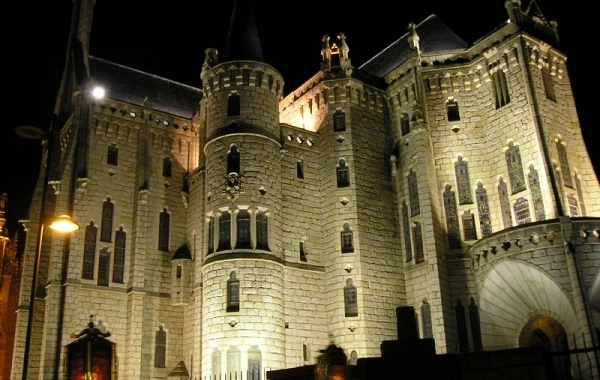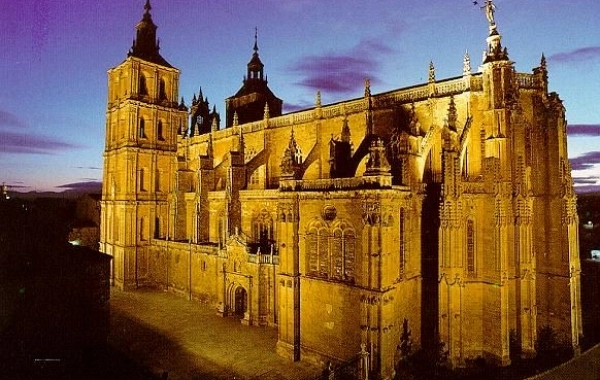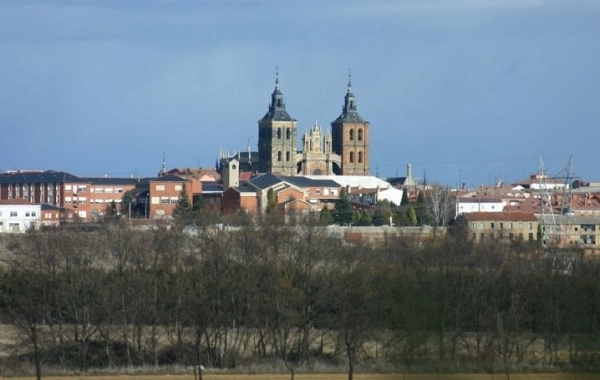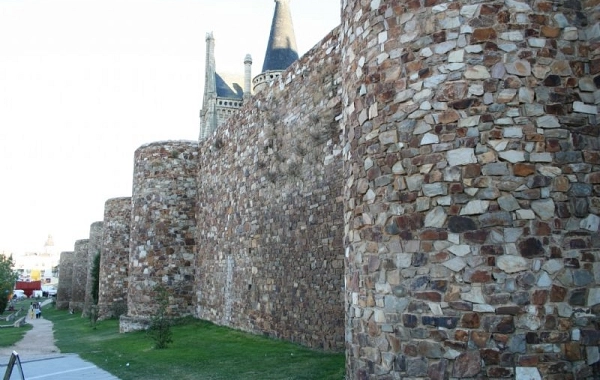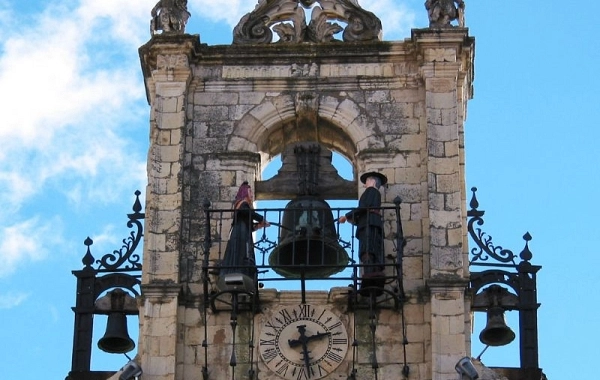VP26 - La Bañeza - Astorga - 24,2 km
Distance24 Km.Related packages
Final Stage of the Via de la Plata: From La Bañeza to Astorga
Route from La Bañeza to Astorga
In this final stage of the Via de la Plata, we depart from La Bañeza heading towards Santiago de Valduerna. After two kilometers, we leave the road to the right and take a path that crosses the Duerna River over a bridge, passing under the highway. Continuing along this path, following the Camino de Santiago markers, we reach the village of Palacios de Valduerna. We exit the village through the cemetery path, and after about 8 kilometers, we arrive near the highway and the N-VI. We cross both and continue parallel to the N-VI until we reach the Turienzo River, which we cross over a Roman bridge. We then pass through the village of Celada and, continuing straight, we reach Astorga, known as Asturica Augusta.
From here, we join the Camino Francés to continue our route towards Santiago de Compostela.
Astorga: A Crossroad of Routes with Great History
History and Location
Astorga, located at 869 meters above sea level, is a town of 12,039 inhabitants and is considered the center of Maragatería. At this point, two important pilgrimage routes intersect: the Camino Francés and the Via de la Plata. Astorga has more than two thousand years of history and its historical center is declared a Cultural Heritage Site. Additionally, it enjoys a strategic location in the fertile valley of the Tuerto River, which has been key to its development throughout the centuries.
What to See in Astorga
Astorga Cathedral
The Astorga Cathedral, begun at the end of the 15th century and completed in the 18th century, is a blend of flamboyant Gothic, Renaissance, and Baroque styles. Inside, highlights include the Virgin of Majestad (Romanesque from the 11th century), the main altarpiece by Becerra, the Immaculate by Gregorio Fernández, the pulpit, and the choir stalls. It is one of the city's most iconic monuments.
Episcopal Palace
The Episcopal Palace designed by Gaudí, built in 1887, houses the Museum of the Ways, which displays an interesting collection of Roman epigraphy and medieval sculpture.
Roman Wall
The Roman wall, restored in the 13th century, is one of the most important remnants of Astorga’s Roman past. The city also features the Roman ergastula, now adapted as the Roman Museum, which houses a large collection of archaeological pieces.
Santuario de Fátima
This sanctuary is known for its beautiful Romanesque capitals and the distinguished yeserías of the Astorgan school inside.
City Hall
The Astorga City Hall, built in 17th-century Baroque style, was designed by master Francisco de la Lastra. It is an excellent example of civil architecture, comparable to other historical buildings in the region.
Convento de Sancti Spiritus
Founded in the 16th century, this cloistered convent houses altarpieces from the 18th century. It is a place of great serenity and historical interest.
Church of San Bartolomé
The oldest church in the city, which combines Mozarabic, Romanesque, Gothic, and Baroque styles due to multiple renovations over the centuries.
Chocolate Museum
Opened in 1994, this museum showcases a vast collection of antique objects related to the traditional chocolate-making process, along with photographs and historic wrappers.
Stages
- VP01 Sevilla - Guillena , 22 km
- VP02 - Guillena - Castilblanco de los Arroyos - 19 km
- VP03 - Castilblanco de los Arroyos - Almadén de la Plata - 29,5 km
- VP04 - Almadén de la Plata-Monesterio - 34,5 km
- VP05 - Monesterio-Fuente de Cantos - 21,6 km
- VP06 - Fuente de Cantos - Zafra - 24,6 km
- VP07 - Zafra - Almendralejo - 36,7 km
- VP08 - Almendralejo - Mérida - 29,6 km
- VP09 - Mérida - Alcuéscar - 36 km
- VP10 - Alcuéscar - Valdesalor - 25,7 km
- VP11 - Valdesalor - Casar de Cáceres - 22,8 km
- VP12 - Casar de Cáceres - Cañaveral - 33,2 km
- VP13 - Cañaveral - Galisteo - 28 km
- VP14 - Galisteo - Cáparra - 29,5 km
- VP15 - Cáparra - Baños de Montemayor - 28,5 km
- VP16 - Baños de Montemayor - Fuenterroble de Salvatierra - 32,9 km
- VP17 - Fuenterroble de Salvatierra - San Pedro de Rozados - 28 km
- VP18 - San Pedro de Rozados - Salamanca - 23,4 km
- VP19 - Salamanca- El Cubo de la Tierra del Vino - 35 km
- VP20 - El Cubo de la Tierra del Vino - Zamora - 31,6 km
- VP21 - Zamora - Montamarta - 18,5 km
- VP22 - Montamarta - Granja de Moreruela - 22,7 km
- VP23 - Granja de Moreruela - Benavente - 25,5 km
- VP24 - Benavente - Alija del Infantado - 22,1 km
- VP25 - Alija del Infantado - La Bañeza - 20,5 km
- VP26 - La Bañeza - Astorga - 24,2 km




